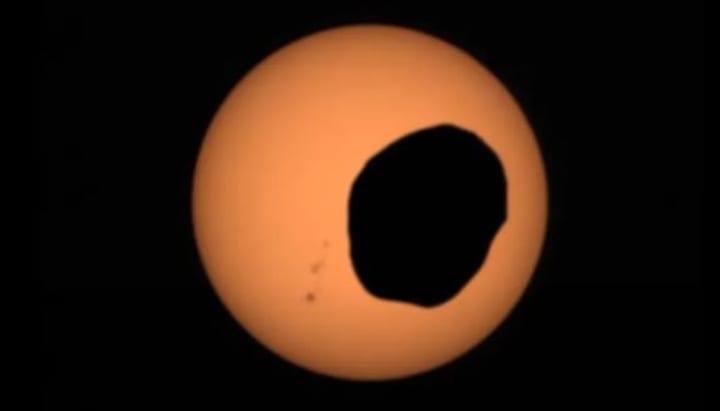The Sun has just released the most powerful solar flare in over five years.
The worst of it will pass us by, but it is a foreshadowing of what is to come.

The Sun has just released the most powerful solar flare in over five years.
The worst of it will pass us by, but it is a foreshadowing of what is to come.
Late Tuesday, the sun produced a spectacular side flare. The eruption was caused by a sunspot on our local star's western limb, and it was the most powerful solar flare witnessed since 2017.
At 8:57 p.m. PT, NASA's Solar Dynamics Observatory detected the explosion, which resulted in a radio blackout for certain shortwave, aviation, and other communications throughout Asia.
The flare was categorized as an X2.2 by scientists; X-class flares are the most powerful, and higher digits after the X indicate that the eruption's power has increased.
Since the sun shot off a pair of monster X-class flares, including an X9, in the second week of September 2017, NASA has recorded a few X1 flares, but this is the strongest seen since the sun blew off a pair of monster X-class flares, including an X9.
In 2003, the highest flare ever recorded was in excess of X28.
A coronal mass ejection, which is charged plasma that moves slower and can produce beautiful auroras when it collides with Earth's magnetic field, preceded the most recent explosion. However, because the eruption occurred on the opposite side of the sun from Earth, the particles were not aimed at us and will not impact our planet.
A flare, on the other hand, emits energy that travels at the speed of light.
The energy generated by a flare, on the other hand, travels at the speed of light and travels in all directions throughout the solar system, which is why the radio blackout occurred at the same time as the flare was visible.
In striking satellite images, Earth appears to be wearing a strange mask.
Our earth smiled thanks to a twirling dance of wet and dry air.

Do you want to see our world transformed into a gigantic smiley face emoji? You do, of course. The GOES-West satellite of the National Oceanic and Atmospheric Administration has you covered. The National Oceanic and Atmospheric Administration (NOAA) posted a GIF of satellite images that depicts Earth with a devilish grin.
The NOAA satellites team tweeted on Tuesday, "This water vapor imagery from GOES-West caught our attention and made us grin," describing the sped-up, eight-hour loop from Sunday as a "smiling weather pattern."
Moisture is represented by the white and blue colors, while drier air is represented by the orange and red colors as it passed across Hawaii. GOES-West keeps an eye on the weather, including storms and lightning.
The giggling With other space photos of objects making faces, Earth is in excellent company. In a NASA Solar Dynamics Observatory photograph from 2014, the sun resembled a jack-o'-lantern. A strange, bug-eyed galaxy system was discovered by the Hubble Space Telescope. Happy Face Crater is a crater on Mars that is suitably named.
The grin-inducing weather pattern on our planet is purely coincidental, and it's not a hint that alien clowns are on their way to attack us.
Mesmerizing NASA Video Captures a Solar Eclipse on Mars
Mars' funky moon Phobos took a chunk out of the sun

When our moon takes a round cookie-cutter bite out of the sun, we get beautiful solar eclipses here on Earth. Solar eclipses appear lumpier on Mars. NASA released an incredible video of the Martian moon Phobos eclipsing the sun on Wednesday.
Phobos and Deimos, Mars' two moons, are both tiny and eccentric. The bigger of the two is Phobos. It resembles a potato and has a large, distinctive impact crater.
The eclipse footage comes from the Mastcam-Z camera on the Perseverance rover. NASA called the video "the most zoomed-in, highest-frame-rate observation of an Phobos solar eclipse yet shot from the Martian surface," according to a statement. The incident occurred on April 2 and lasted only 40 seconds.
As Phobos appears as a silhouette moving in front of the orange orb of the sun, the eclipse film is captivating to behold. It's not just a nice picture, though. According to NASA, "these findings can help scientists better comprehend the moon's orbit and how its gravity pulls on the Martian surface, ultimately altering the red planet's crust and mantle."
The Mastcam-Z on the rover is a step ahead from earlier cameras delivered to Mars. It features a sun filter and can zoom in and out, making it ideal for capturing an eclipse. "I knew it was going to be nice, but I didn't anticipate it to be this spectacular," Malin Space Science Systems Mastcam-Z team member Rachel Howson said.
Phobos is on a leisurely course to crash with Mars millions of years from now, but it can look forward to many more beautiful eclipses before its doomsday.
Thank You for reading..
Happy Day ..
About the Creator
Mr.Big Brain
Hello Welcome to my Big brain community ..






Comments
There are no comments for this story
Be the first to respond and start the conversation.